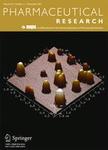版权所有:内蒙古大学图书馆 技术提供:维普资讯• 智图
内蒙古自治区呼和浩特市赛罕区大学西街235号 邮编: 010021

作者机构:Immunology Research Center Tabriz University of Medical Sciences Tabriz Iran Student Research Committee Tabriz University of Medical Sciences Tabriz Iran Division of Genetics Department of Biology Faculty of Science University of Isfahan Isfahan Iran Department of Chemical and Materials Engineering The University of Alabama in Huntsville Huntsville USA Drug Applied Research Center Tabriz University of Medical Sciences Tabriz Iran Student Research Committee Department of Biotechnology School of Advanced Technologies in Medicine Shahid Beheshti University of Medical Sciences Tehran Iran Department of Biology Faculty of Basic Science Payame Noor University Tehran Iran Nanotechnology Research Centre Faculty of Pharmacy Tehran University of Medical Sciences Tehran Iran Department of radiopharmacy Faculty of Pharmacy Tehran University of Medical Sciences Tehran Iran Department of Oncology Cross Cancer Institute The University of Alberta Edmonton Canada Cellular and Molecular Research Center Yasuj University of Medical Sciences Yasuj Iran Division of Surgical Oncology Massachusetts General Hospital Cancer Center and Harvard Medical School Boston USA Department of Immunology Faculty of Medicine Tabriz University of Medical Sciences Tabriz Iran
出 版 物:《Pharmaceutical Research》
年 卷 期:2020年第37卷第10期
页 面:1-20页
学科分类:1007[医学-药学(可授医学、理学学位)] 10[医学]
摘 要:Hypoxia-inducible factor (HIF) is one of the critical components of the tumor microenvironment that is involved in tumor development. HIF-1α functionally and physically interacts with CDK1, 2, and 5 and stimulates the cell cycle progression and Cyclin-Dependent Kinase (CDK) expression. Therefore, hypoxic tumor microenvironment and CDK overexpression lead to increased cell cycle progression and tumor expansion. Therefore, we decided to suppress cancer cell expansion by blocking HIF-1α and CDK molecules. In the present study, we used the carboxylated graphene oxide (CGO) conjugated with trimethyl chitosan (TMC) and hyaluronate (HA) nanoparticles (NPs) loaded with HIF-1α-siRNA and Dinaciclib, the CDK inhibitor, for silencing HIF-1α and blockade of CDKs in CD44-expressing cancer cells and evaluated the impact of combination therapy on proliferation, metastasis, apoptosis, and tumor growth. The results indicated that the manufactured NPs had conceivable physicochemical properties, high cellular uptake, and low toxicity. Moreover, combination therapy of cancer cells using CGO-TMC-HA NPs loaded with HIF-1α siRNA and Dinaciclib (SCH 727965) significantly suppressed the CDKs/HIF-1α and consequently, decreased the proliferation, migration, angiogenesis, and colony formation in tumor cells. These results indicate the ability of CGO-TMC-HA NPs for dual drug/gene delivery in cancer treatment. Furthermore, the simultaneous inhibition of CDKs/HIF-1α can be considered as a novel anti-cancer treatment strategy; however, further research is needed to confirm this treatment in vivo.